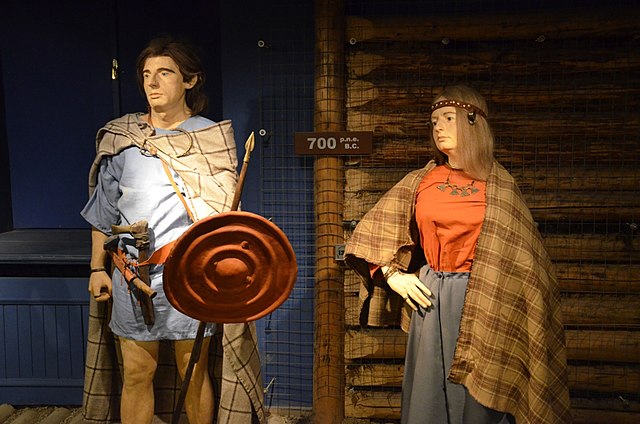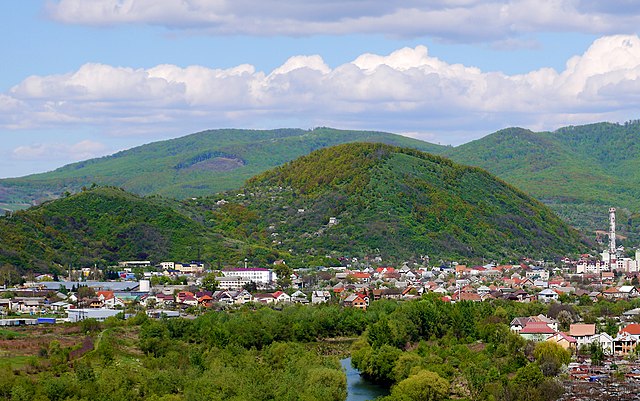The Bastarnae, sometimes called the Peuci or Peucini, were an ancient people who between 200 BC and 300 AD inhabited areas north of the Roman frontier on the Lower Danube. The Bastarnae lived in the region between the Carpathian Mountains and the river Dnieper, to the north and east of ancient Dacia. The Peucini were a subtribe who occupied the region north of the Danube Delta. Their name was sometimes used for the Bastarnae as a whole.
Attempt to reconstruct Bastarnae costumes at the Archaeological Museum of Kraków. Such clothing and weapons were commonplace among peoples on the Roman Empire's borders.
Silver tetradrachm of Philip V of Macedon
Coin issued by the Greek coastal city of Histria (Sinoe)
Statue of Augustus in the garb of Roman imperator (military supreme commander). By the end of his sole rule (14 AD), Augustus had expanded the empire to the Danube, which was to remain its central/eastern European border for its entire history (except for the occupation of Dacia 105–275).
The Carpathian Mountains or Carpathians are a range of mountains forming an arc across Central Europe. Roughly 1,500 km (930 mi) long, it is the third-longest European mountain range after the Urals at 2,500 km (1,600 mi) and the Scandinavian Mountains at 1,700 km (1,100 mi). The range stretches from the far eastern Czech Republic (3%) and Austria (1%) in the northwest through Slovakia (21%), Poland (10%), Ukraine (10%), Romania (50%) to Serbia (5%) in the south. The highest range within the Carpathians is known as the Tatra mountains in Poland and Slovakia, where the highest peaks exceed 2,600 m (8,500 ft). The second-highest range is the Southern Carpathians in Romania, where the highest peaks range between 2,500 m (8,200 ft) and 2,550 m (8,370 ft).
Tatra Mountains - Eye of the Sea, Mięguszowiecki Summits, Cubryna, Mnich
The Eastern Carpathians as Alpes Bastarnice on Tabula Peutingeriana
Maramureș. Mountains in the north of Romania
Mukachevo, Western Ukraine








